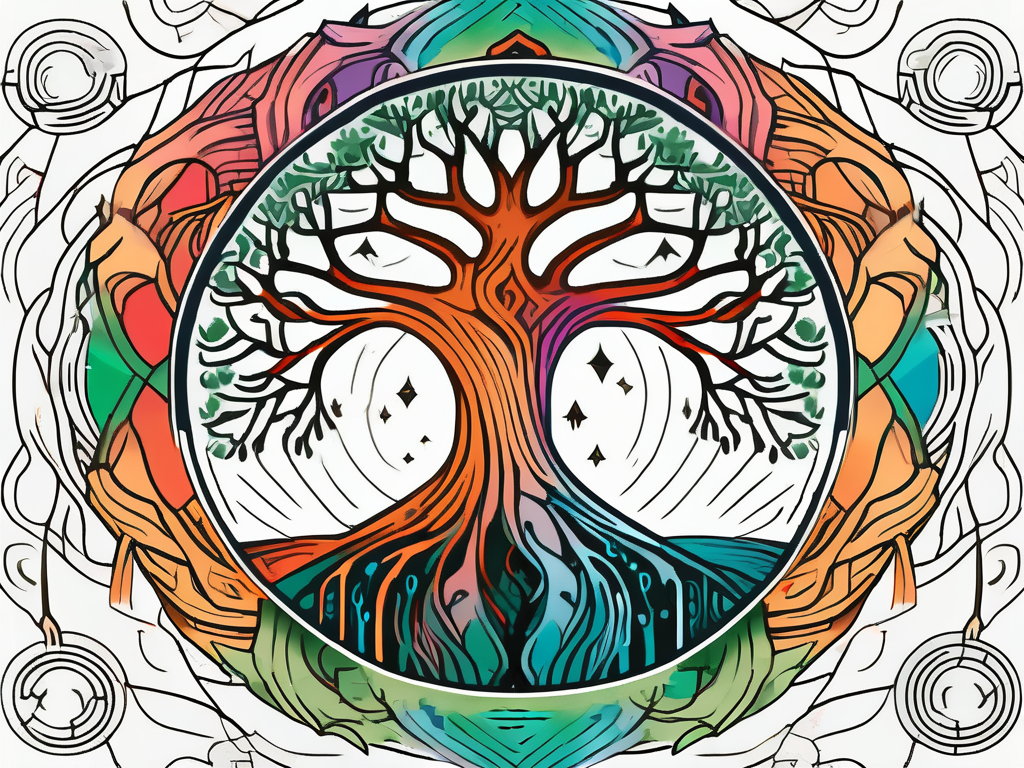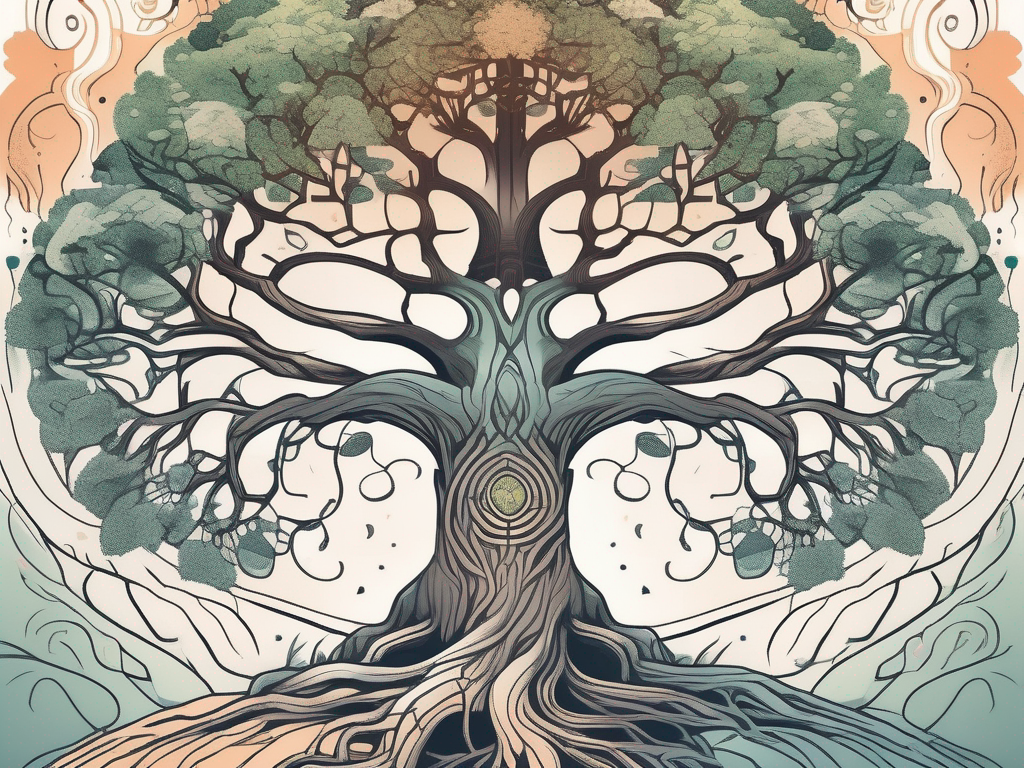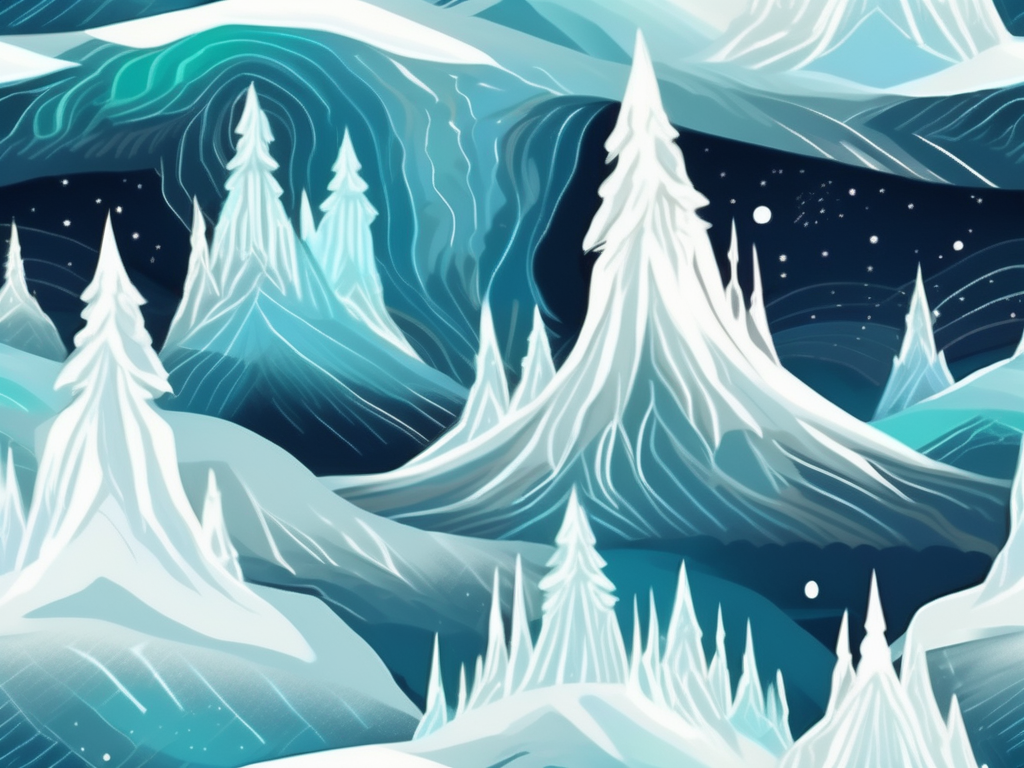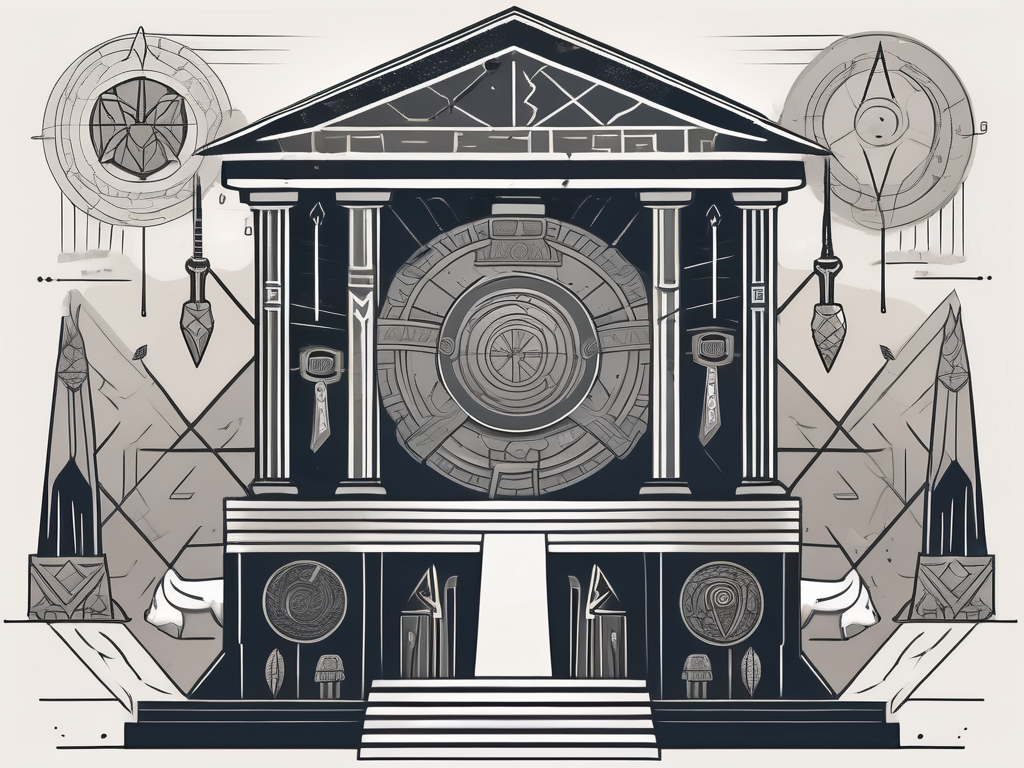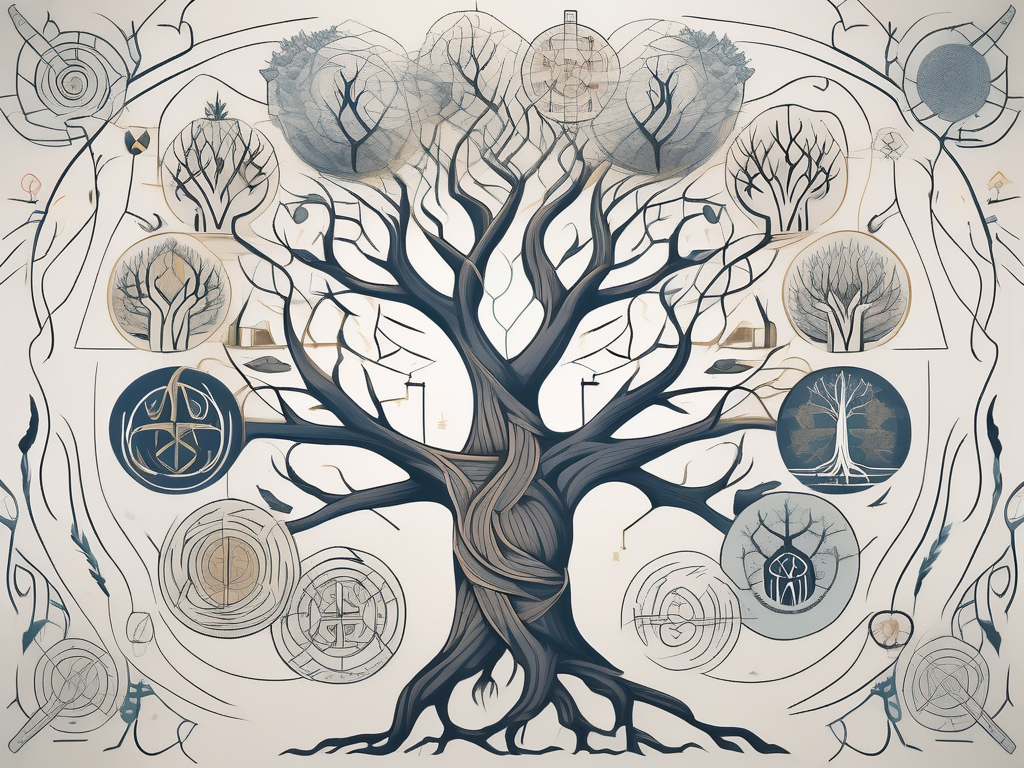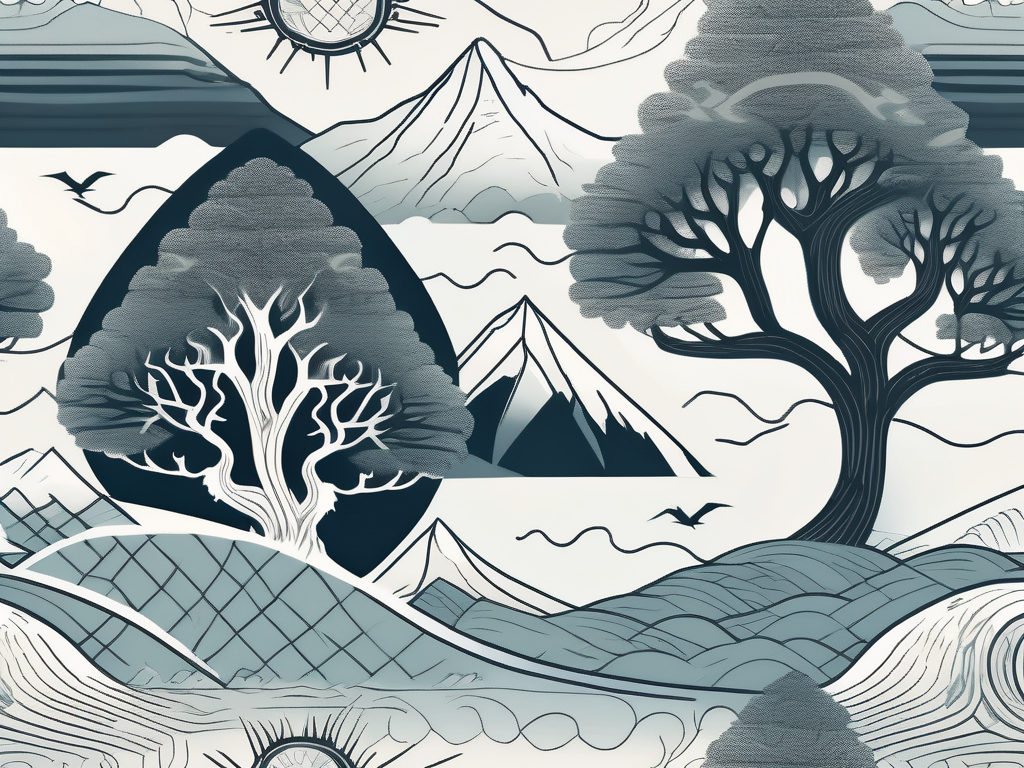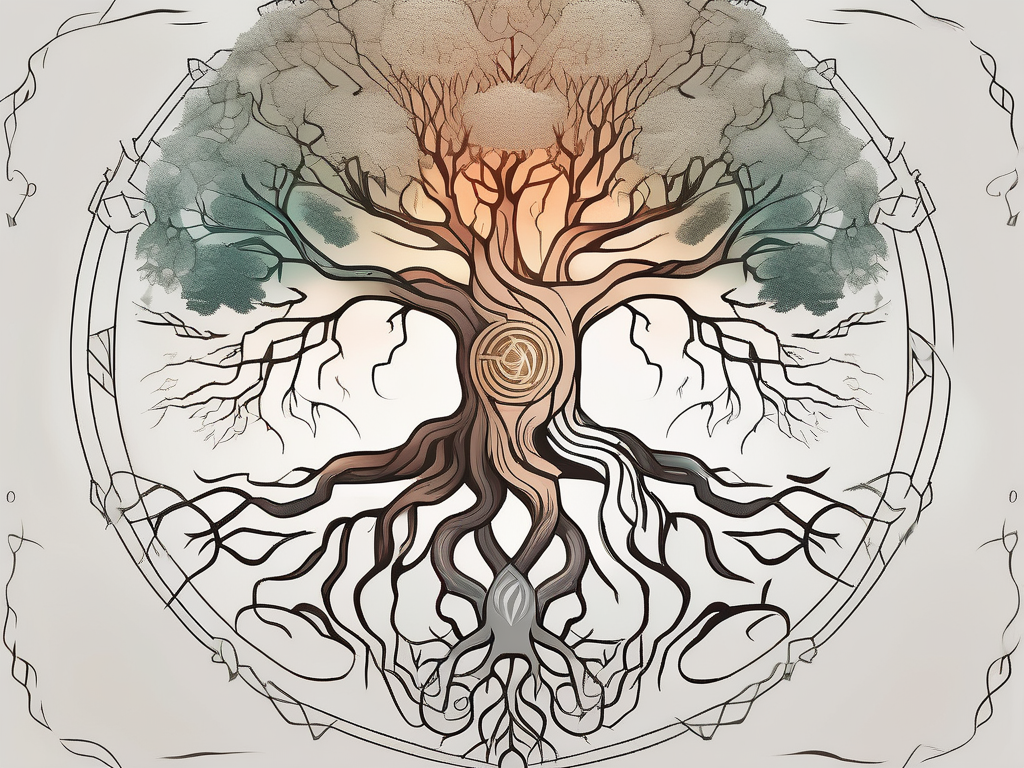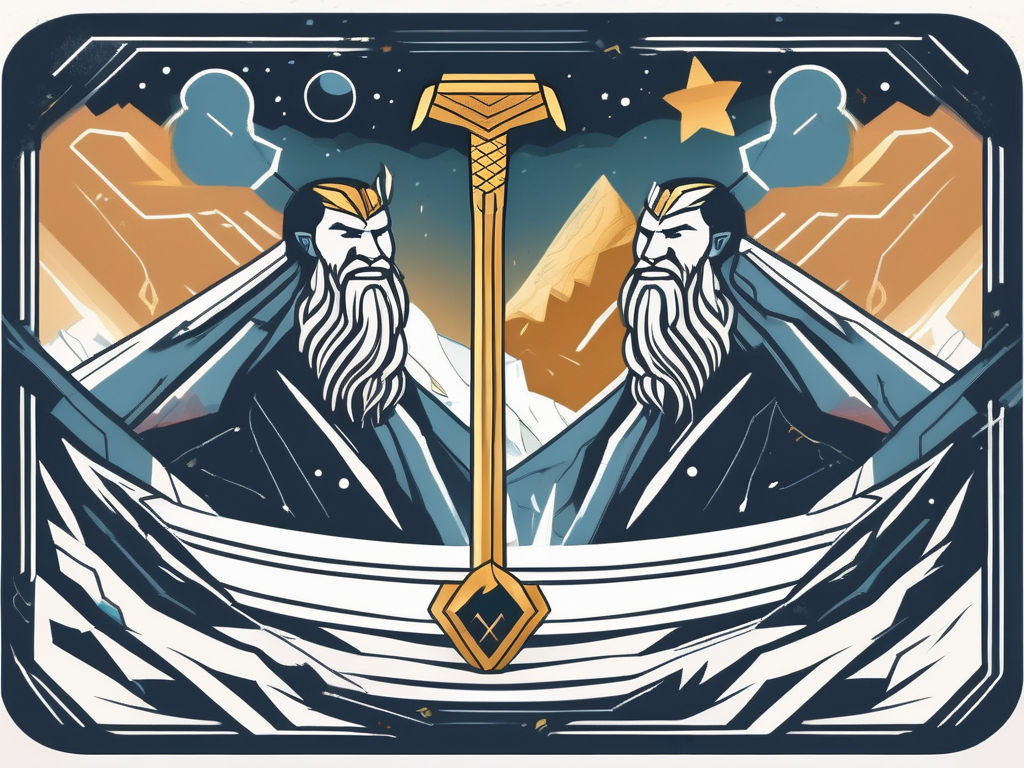Norse mythology is a vast and captivating subject that has intrigued people for centuries. Within this rich tapestry of tales and legends lies the concept of the Nine Realms, a cosmic structure that forms the foundation of Norse mythology. In this article, we will embark on a journey to understand and explore these fascinating realms, each with its own unique characteristics and inhabitants.
Understanding Norse Mythology
Before we delve into the Nine Realms, it is essential to have a basic understanding of Norse mythology. Originating from the ancient Norse people, this mythological tradition is steeped in tales of gods, goddesses, giants, and mythical creatures. The stories not only entertained but also held significant cultural and societal importance for the Vikings.
Mythology played a vital role in the Viking society, shaping their beliefs, rituals, and even their moral code. The gods and their exploits provided guidance and inspiration, while the creation myths and cosmology offered an explanation for the world’s existence.
The Origin and Influence of Norse Mythology
Norse mythology emerged from the collective beliefs of the Norse people, who inhabited parts of what is now Scandinavia during the Viking Age. The stories were passed down orally through generations before they were eventually recorded in written form.
These myths and legends were not merely tales to be told around the fireside; they were a fundamental part of the Norse culture. They were a way for the people to connect with their ancestors, to understand their place in the world, and to make sense of the mysteries that surrounded them.
The influence of Norse mythology extended beyond the boundaries of Viking society. In fact, Norse mythology’s impact can be seen in various aspects of modern popular culture, including literature, art, and even movies. Names such as Odin, Thor, and Loki have become household names today, thanks to their appearances in the Marvel Cinematic Universe.
These ancient stories continue to captivate and inspire people around the world, demonstrating the enduring power and relevance of Norse mythology.
The Importance of Mythology in Viking Society
Mythology played a crucial role in the daily lives of the Vikings. It helped them make sense of the world around them and provided explanations for natural phenomena. Whether it was thunderstorms, the changing seasons, or the cycles of life and death, mythology offered a framework to understand these phenomena.
But mythology was not just a way to explain the physical world; it also provided a moral framework for Viking society. The stories of gods and heroes taught important lessons about bravery, honor, and loyalty. They showed the consequences of greed, betrayal, and arrogance. These stories served as a moral compass, instilling a sense of identity and purpose.
For the Vikings, mythology was not just a collection of stories; it was a way of life. It shaped their worldview, their values, and their actions. It was a source of inspiration and guidance, providing a connection to their ancestors and a sense of belonging to something greater than themselves.
Today, Norse mythology continues to fascinate and intrigue people from all walks of life. Its rich tapestry of gods, heroes, and mythical creatures offers a glimpse into a world that is both familiar and mysterious. Whether through books, movies, or art, the legacy of Norse mythology lives on, reminding us of the enduring power of storytelling and the human need for meaning and connection.
The Cosmic Structure of Norse Mythology
At the heart of Norse mythology lies a complex cosmology that is both fascinating and unique. Central to this cosmological framework is Yggdrasil, the World Tree, which connects the Nine Realms and serves as a symbol of the interconnectedness of all things.
Yggdrasil: The World Tree
The mighty Yggdrasil stands at the center of the Norse cosmos, its branches reaching far and wide. Its roots extend deep into the different realms, connecting them together. Yggdrasil is not merely a physical tree; it embodies the entire universe, encompassing the realms of gods, humans, giants, and other mythical beings.
According to the mythology, it is also believed that Yggdrasil contains various creatures living within its branches and roots, further highlighting its profound significance.
The Concept of Nine Realms
Surrounding Yggdrasil are the Nine Realms, each with its distinct characteristics and inhabitants. These realms represent different dimensions or planes of existence, all existing within the vast Norse cosmos.
Each realm has its own unique landscapes, climates, and beings, creating a diverse and intricate mythological universe. Let’s now embark on a journey through each of these realms, each offering its own wonders and stories to uncover.
A Deep Dive into Each Realm
Asgard: The Realm of the Aesir Gods
Asgard stands as the celestial realm of the Aesir gods, the principal deities in Norse mythology. With its shining palaces and majestic halls, Asgard is home to gods like Odin, Thor, and Frigg. These mighty beings govern various aspects of life, including war, wisdom, and fertility, holding immense power over the cosmos.
Within its golden walls, Asgard provides a glimpse into the grandeur and majesty of the divine realm, a place where gods reign supreme and where mortals can only dream of setting foot.
Midgard: The Realm of Humans
Midgard, also known as “Middle-Earth,” is the realm inhabited by humans. It is the realm we call home, where our mortal lives unfold. Midgard is a diverse and vast realm, encompassing everything from towering mountains to expansive seas.
Here, mortals navigate their lives, facing their desires, struggles, and triumphs. Midgard showcases the delicate balance between the human world and the divine realms, as gods and humans often cross paths and influence each other’s journeys.
Jotunheim: The Realm of the Giants
Jotunheim is the realm of giants, a place where colossal beings dwell. The giants, often depicted as formidable adversaries of the gods, possess immense strength and power. Jotunheim is a realm of contrasts, with its harsh and desolate landscapes contrasting with the gods’ celestial realms.
Despite their differences, interactions between gods and giants are not always hostile, as alliances and even romantic relationships can form between the two realms.
Vanaheim: The Realm of the Vanir Gods
Vanaheim is home to the Vanir gods, a group of deities associated with fertility, prosperity, and the forces of nature. This lush and vibrant realm is known for its fertile lands and abundant harvests, reflecting the Vanir’s connection to nature.
Although often peaceful, conflicts between the Aesir and the Vanir gods have occurred, highlighting the intricate web of alliances and rivalries within the Norse pantheon.
Alfheim: The Realm of the Light Elves
Alfheim is a realm filled with ethereal beauty and radiance. It is the domain of the light elves, benevolent beings associated with light, healing, and protection. The realm possesses an otherworldly atmosphere, with luminous landscapes and gleaming silver palaces.
The light elves in Alfheim bring a sense of enchantment and tranquility to Norse mythology, representing the delicate balance between light and darkness, good and evil.
Svartalfheim: The Realm of the Dwarfs
Svartalfheim, also known as Nidavellir, is the realm of the dwarfs, skilled craftsmen known for their exceptional abilities in mining and forging. This subterranean realm houses vast underground caverns brimming with precious ores and gemstones.
The dwarfs’ creations, be it weapons, jewelry, or magical artifacts, are highly sought after by gods and mortals alike. Svartalfheim showcases the hidden depths and treasures found beneath the surface of Norse mythology.
Helheim: The Realm of the Dead
Helheim serves as the realm where the souls of the deceased reside. Ruled by the goddess Hel, it is a somber and eerie place, often associated with suffering and darkness. As the final resting place for mortals, Helheim represents the journey from life to death in Norse mythology.
While it may seem bleak, Helheim also carries a sense of depth and mystery, exploring the complex relationship between life and death and offering a glimpse into the afterlife.
Niflheim: The Realm of Ice and Cold
Niflheim, the realm of ice and cold, exists in the icy extremes of the Norse cosmos. This frozen realm, perpetually covered in ice and snow, stands as a stark contrast to the other realms. It is believed to be the realm from which the primordial being Ymir emerged, giving birth to the world.
With its vast glaciers and icy landscapes, Niflheim encapsulates the raw power and unyielding nature of the elements in Norse mythology.
Muspelheim: The Realm of Fire and Heat
Muspelheim represents the realm of fire and heat, a place of intense flames and scorching heat. It is the domain of Surtr, the fire giant who wields a flaming sword that can bring about the destruction of the cosmos during Ragnarok, the mythical end of the world.
Muspelheim symbolizes the destructive forces of nature and the cyclical nature of creation and destruction in Norse mythology. Its fiery landscapes ignite both fear and reverence, reminding us of the ever-present balance between creation and annihilation.
As our exploration of the Nine Realms comes to a close, we begin to grasp the vastness and complexity of Norse mythology. These realms, with their contrasting landscapes and inhabitants, offer us a captivating glimpse into the Norse cosmos and the rich tapestry of stories that have enthralled generations.
Whether we find ourselves drawn to the celestial splendor of Asgard, the mythical creatures of Jotunheim, or the enigmatic realm of Helheim, the Nine Realms of Norse mythology will continue to capture our imaginations and remind us of the enduring power of ancient storytelling.
